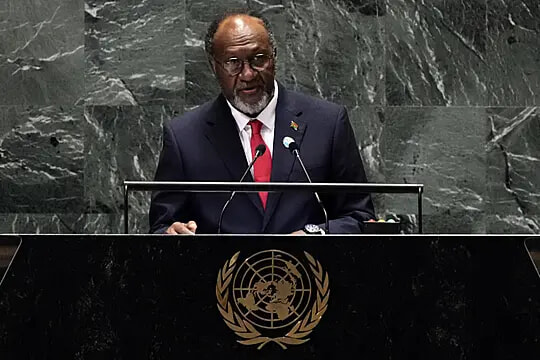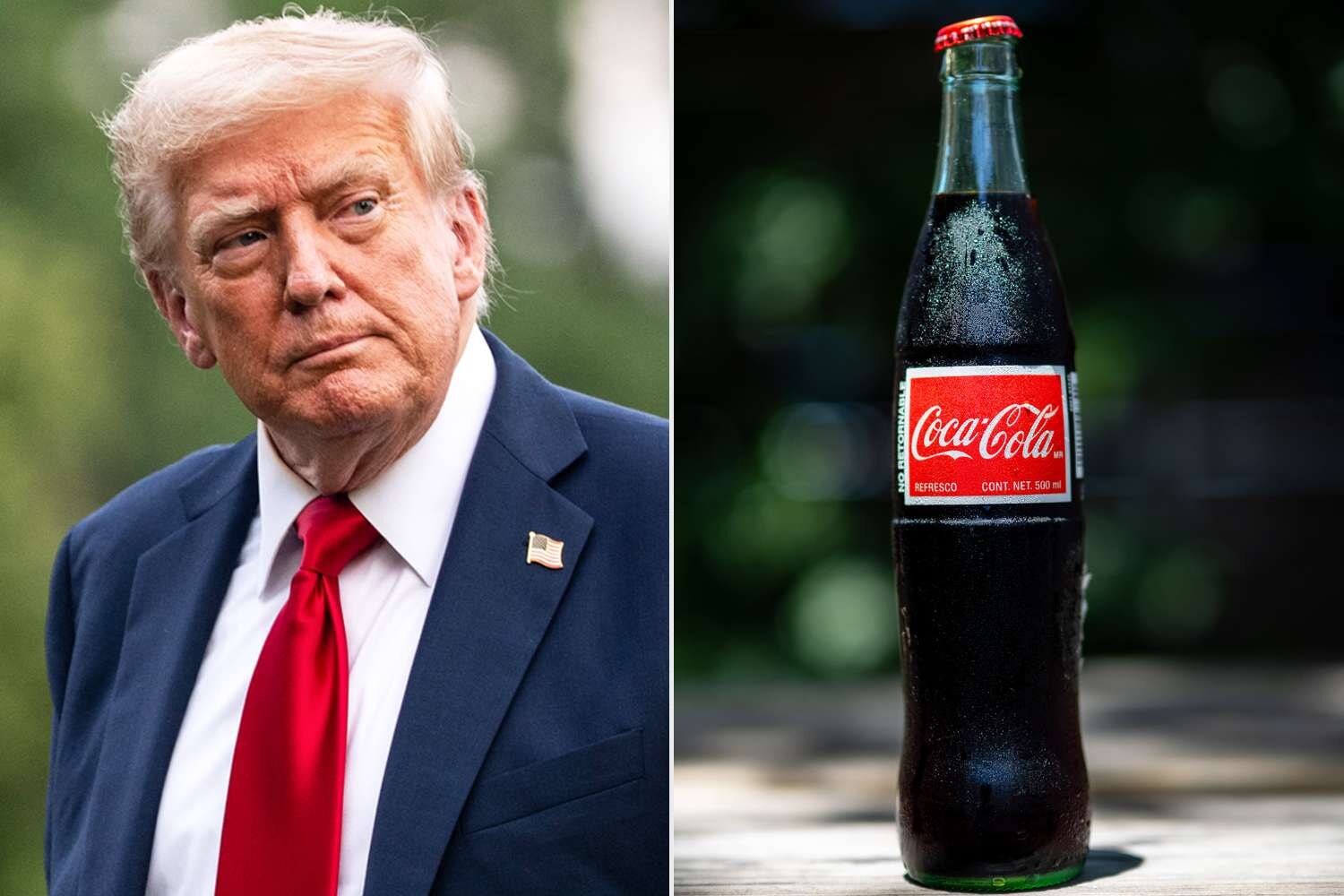
Hakeem Jeffries Breaks All-Time Record for Longest Speech on the House Floor
What an accomplishment.
Published July 8, 2025
Advertisement
Advertisement
1. Political Theater

As the summer of 2025 dawned on Washington, the atmosphere in Congress had grown tense and fractious, fueled by the imminent arrival of President Donald Trump’s sweeping $4.5 trillion tax and spending package. Republican leaders hustled through late-night negotiations, desperate to unite their fractured caucus before the July Fourth deadline demanded by the White House. Within the Democratic ranks, frustration simmered as the party found itself unable to halt a bill packed with deep spending cuts and controversial tax breaks. Behind the scenes, both parties traded barbs over the legitimacy of the bill’s rushed passage, as lawmakers lamented the lack of meaningful debate and transparency in the legislative process. For weeks, grassroots activists had urged Democratic leaders to use every tool at their disposal to fight the GOP agenda, demanding evidence that their representatives were truly resisting. It was in this climate of growing urgency that a new strategy began to take shape, one that would thrust the House minority leader into the national spotlight. Increasingly, Democrats had turned to marathon speeches and public displays as acts of protest, aiming to rally their supporters and capture public attention. As negotiations faltered and tempers flared, the battle lines for a dramatic confrontation in the House chamber were quietly being drawn. Veteran lawmakers recalled earlier efforts to stall major bills, invoking the memory of marathon speeches delivered by Kevin McCarthy and Nancy Pelosi in previous years. But few could have anticipated just how far the Democratic leader was willing to go to make a stand this time. It was in these hours, before the country woke up to news of history in the making, that the stage was set for a parliamentary showdown.
Advertisement
2. The “Big, Beautiful Bill”

At the center of the storm stood President Trump’s so-called “Big, Beautiful Bill,” a sprawling legislative package promising massive tax cuts, major spending reductions, and a radical reshaping of government priorities. Republicans boasted that the measure would extend the 2017 tax cuts, eliminate taxes on tips and overtime, and pour over $170 billion into immigration enforcement and border security. But to critics, these benefits came at a steep cost: deep cuts to Medicaid, nutrition assistance, and renewable energy programs, affecting millions of vulnerable Americans. Nonpartisan budget analysts warned that the bill would increase the federal deficit by $3.4 trillion and leave more than 12 million people without health insurance within a decade. Inside the Capitol, the debate grew more heated as news spread of last-minute deals struck behind closed doors and intense pressure campaigns aimed at wavering lawmakers. The urgency of the moment was only heightened by the memory of previous legislative battles, with both sides preparing to deploy every available tactic to gain the upper hand. For Democrats, the fight was not just about policy but about standing up for the families, children, and elderly who relied on threatened programs. As Speaker Mike Johnson marshaled his forces through the pre-dawn hours, President Trump made personal appeals to skeptical Republicans, vowing the legislation would be a signature achievement. Public opposition swelled as advocacy groups, health care providers, and ordinary citizens sent a flurry of letters and calls to Capitol Hill, pleading for a different outcome. Amid the chaos, few doubted that something extraordinary would be required to break the legislative momentum gathering on the Republican side. It was in this context that House Minority Leader Hakeem Jeffries began quietly planning his next move.
Advertisement
3. Legacy of Long Speeches

For decades, the House’s so-called “magic minute” had allowed its top leaders to speak on the floor for as long as they wished, turning the chamber into a stage for high-stakes drama. Rep. Nancy Pelosi’s eight-hour address on immigration in 2018, and Kevin McCarthy’s even longer speech in 2021, had set the modern standard for symbolic resistance. Senator Cory Booker’s 25-hour filibuster earlier that spring had revived the tradition of marathon oratory, earning him the admiration of the Democratic base. These acts, while unable to stop legislation outright, offered minority leaders a rare chance to command national attention and elevate their causes. Democrats increasingly leaned on such displays, both to protest Trump’s agenda and to show their supporters that they would fight on every available front. These extended speeches also became focal points for the media, drawing cameras and reporters who might otherwise have moved on from routine floor debates. Within Democratic circles, there was growing consensus that the party needed to be seen as “fighting harder” and using every procedural weapon possible. As the Republican majority prepared to steamroll the opposition, there was little doubt that the “magic minute” would soon become the latest battlefield. But as lawmakers arrived for a rare early-morning session, few suspected the scale of the performance about to unfold. It was in this moment—when it appeared all avenues of resistance had been exhausted—that Hakeem Jeffries stepped to the lectern. The legacy of long speeches was about to be redefined yet again, this time by a leader determined to turn delay into a form of defiance.
Advertisement
4. Setting the Stage for a Showdown

The House chamber was unusually tense as the hour approached, with both sides anxiously watching the clock and counting votes. Jeffries arrived dressed in a crisp blue suit, carrying stacks of binders filled with stories from ordinary Americans whose lives would be upended by the GOP bill. He took a moment to speak privately with House Speaker Mike Johnson, warning that his floor remarks would be far from brief. As news of his intentions spread, Democratic colleagues gathered behind Jeffries in solidarity, prepared to support him through what would become a marathon session. The Republican leadership, meanwhile, maintained a façade of confidence, insisting the delay would not alter the final outcome. Lawmakers checked their phones and rearranged travel plans, uncertain how long the day’s proceedings would now last. For many in the chamber, the air crackled with anticipation, a sense that something historic was about to take place on the House floor. Even seasoned Capitol staffers found themselves captivated by the unfolding scene, aware that precedent was being tested in real time. Reporters jockeyed for position, their cameras fixed on the lectern as Jeffries took a long, steady breath and began to speak. Outside, demonstrators gathered, their chants echoing through the marble halls, fueling the sense of urgency within. As the clock ticked forward, it became clear that Jeffries intended to do more than simply speak—he intended to hold the floor for as long as humanly possible.
Advertisement
5. Jeffries’ Record-Breaking Speech

At precisely 4:53 a.m., Jeffries began his historic address, invoking his right as minority leader to speak for as long as he wished under the “magic minute” rule. As the minutes turned to hours, it became apparent that he was not simply delaying a vote—he was mounting a fierce, sustained indictment of Trump’s legislative priorities. Throughout the speech, Jeffries read aloud letters from constituents, testimonials from Medicaid recipients, and statements from those facing loss of health care and assistance. He repeatedly declared the House a “crime scene,” warning that the bill would cause untold suffering, loss of insurance, and even deaths among the nation’s most vulnerable. The marathon speech quickly surpassed previous records, eclipsing McCarthy’s eight-hour, 32-minute feat, and captivating the country as each hour passed. His delivery ranged from solemn recitations of fact to impassioned oratory, invoking civil rights heroes like John Lewis and Martin Luther King Jr. Jeffries criticized Republicans for scheduling the debate in the dead of night, vowing to force them to vote in the daylight so the public could bear witness. He called the bill an “abomination,” urging fellow lawmakers to reject what he described as an “immoral document” that would “tear people down.” Even as the chamber emptied of Republicans, Democratic colleagues remained by his side, cheering and applauding as he pressed on without a break. By 1:37 p.m., after eight hours and forty-four minutes, Jeffries finally relinquished the floor, having shattered the record for the longest continuous speech in House history. The feat electrified supporters and drew the eyes of a nation to a legislative battle that would shape the lives of millions.
Advertisement
6. Political Calculus

The aftermath of Jeffries’ speech saw sharply divided reactions within the chamber and across the country. Democratic lawmakers lauded the effort as a powerful act of resistance, a moment of moral clarity in the face of an overwhelming legislative juggernaut. Many Republicans, on the other hand, dismissed the marathon as little more than “hogwash,” insisting that the spectacle would have no bearing on the bill’s passage. House Speaker Mike Johnson scoffed at the tactic, declaring the delay a waste of time and vowing that Republicans would prevail regardless. Some in Jeffries’ own caucus privately grumbled about the lack of warning and the logistical headaches caused by the extended session. Still, the display of unity among Democratic ranks in the chamber, with colleagues cheering, chanting, and offering support, was unmistakable. Across social media, activists rallied around the speech, urging Americans to call their representatives and keep up the fight. The episode highlighted how politics in 2025 had become as much about symbolism and spectacle as about the substance of lawmaking. For Democratic strategists, Jeffries’ performance offered a template for future battles, demonstrating the enduring power of public oratory. Republican leaders, meanwhile, saw an opportunity to rally their base by deriding the “delay tactics” and casting themselves as champions of progress. The speech would be remembered not just for its duration, but for the clarity and conviction with which it challenged the prevailing legislative winds.
Advertisement
7. The Bill’s Substance.... and Its Controversy

Even as the drama played out on the House floor, attention remained fixed on the contents of Trump’s “Big, Beautiful Bill.” The legislation was vast in scope, promising to reshape tax policy, overhaul spending priorities, and fulfill long-standing conservative ambitions. Major features included permanent extensions of earlier tax cuts, elimination of taxes on tips and overtime pay, and a massive investment in border security and enforcement. Critics zeroed in on the bill’s spending cuts, especially those targeting Medicaid, SNAP, and other vital social programs. Analysts warned that millions could lose health coverage, and that the benefits of the tax reductions would disproportionately favor the wealthy and large corporations. Republican defenders argued the measure was necessary to stimulate economic growth, reward work, and restore fiscal discipline. Supporters pointed to the influx of funding for immigration enforcement as evidence that the party was delivering on campaign promises. However, nonpartisan reports highlighted the projected $3.4 trillion increase to the deficit and the enormous human cost of the program cuts. As public debate raged, both sides marshaled their own data and stories, each seeking to frame the bill’s impact in the starkest possible terms. The battle over the bill’s substance became a proxy for deeper ideological divides in American society. It was in this crucible of controversy that the fate of the legislation—and the people it would affect—would ultimately be decided.
Advertisement
8. Resistance and Symbolic Action

The summer’s events marked a new phase in congressional resistance tactics, with marathon speeches and procedural delays assuming an outsize role in political theater. Senator Cory Booker’s earlier filibuster had already set a new record in the Senate, giving Democrats a model for using oratory to capture public attention. Both chambers saw a revival of sit-ins, extended debates, and marathon speeches as means of protest against the Trump administration’s aggressive legislative agenda. These actions, though rarely successful in stopping bills, were credited with energizing the base and keeping contentious issues in the national spotlight. Democratic leaders like Jeffries and Booker leveraged these moments to tell personal stories and elevate the voices of ordinary Americans. Such symbolic acts came to embody the party’s resistance strategy, often compensating for their lack of procedural power in the minority. Republicans, for their part, condemned the delays as political grandstanding, confident that their legislative majorities would secure ultimate victory. Amid these clashes, both parties increasingly relied on social media and live broadcasts to amplify their message and shape public perception. The spectacle of high drama on the House and Senate floors became a recurring feature of an era defined by polarization and mistrust. For supporters, these gestures signaled courage and conviction in the face of daunting odds; for critics, they represented the hollowing out of substantive governance. Whatever one’s perspective, the summer of 2025 established a new template for political confrontation in the modern Congress.
Advertisement
9. The “Big, Beautiful Bill” Redux

In the end, no marathon speech or procedural delay could alter the underlying math of the House. Republicans pressed forward after Jeffries’ speech, eager to claim victory and fulfill the president’s demand for swift action before Independence Day. With party unity restored after hours of negotiations, the majority overcame scattered defections and voted to approve the sprawling legislative package. The vote was cast in broad daylight, just as Jeffries had demanded, ensuring that the nation watched as history was made. Democrats, though unable to stop the bill, succeeded in spotlighting their objections and rallying public opposition in the hours before the final tally. As the gavel fell, Republicans celebrated what they called “historic tax relief” for families and businesses, promising a new era of prosperity. President Trump, waiting at the White House, quickly prepared to sign the legislation into law in a July Fourth ceremony replete with patriotic symbolism. The bill’s supporters hailed it as a victory for conservative values, while opponents vowed to fight its implementation in the courts and at the ballot box. Outside the Capitol, activists and advocacy groups vowed to keep up the pressure and hold lawmakers accountable for the consequences of their votes. For many, the final passage marked not the end, but the beginning of a prolonged struggle over the direction of American government. The events of that day would resonate through the coming months, shaping campaigns, court battles, and the fate of millions who watched anxiously from the sidelines.
Advertisement
10. Legacy

As the dust settled in the House chamber, the impact of Hakeem Jeffries’ record-breaking speech began to reverberate far beyond Capitol Hill. The display of resistance energized Democratic voters and injected new urgency into debates over the nation’s social safety net. Republicans, while triumphant in the short term, faced the daunting challenge of defending their legislative choices amid mounting criticism and public concern. The passage of the “Big, Beautiful Bill” set the stage for bitter legal and political fights, with advocacy groups mobilizing to challenge its most controversial provisions. Jeffries’ performance entered the annals of congressional history, inspiring a new generation of lawmakers to see the chamber not only as a site of policy, but as a platform for moral argument. Analysts predicted that future legislative battles would feature more marathon speeches and symbolic actions as the minority sought to make its voice heard. The struggle over the bill became a touchstone for broader questions about democracy, governance, and the limits of power in a polarized era. For millions affected by the legislation, the coming years promised uncertainty, as the fight over health care, tax policy, and social services shifted to new arenas. In the wake of the vote, calls for unity and healing rang out, but deep divisions persisted, shaping the contours of the next election cycle. The events of July 2025 offered a vivid reminder of the stakes at play in American politics—and of the enduring power of a single determined voice to shake the foundations of the system. As history moved forward, the legacy of the longest speech in House history would remain as both a warning and an inspiration for all who follow.
Advertisement
Advertisement
You May Also Like






